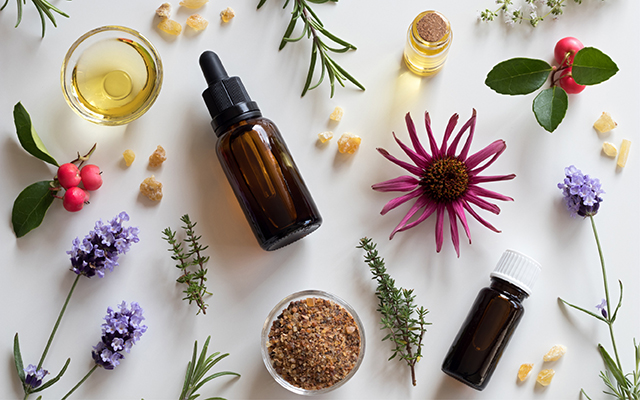Many of us are reclaiming agency over our health, increasingly looking to plant-based, holistic approaches to medicine. This, perhaps, is in response to a sense of disconnect between our bodies and the earth, or simply a dissatisfaction with our system of health care. Enter the world of essential oils, potent distillations of flowers, herbs, and spices that concentrate their scents as well as their other benefits. Used as an alternative medicine, essential oils may give us access to more natural or effective ways to treat conditions that Western medicine isn’t addressing adequately. Some of us may even be turning to essential oils because our conditions don’t register on conventional scans or tests, leaving us at a loss for how to cure what ails us: after all, without a diagnosis, there’s not much that a Western medicine health practitioner can do for us. The big question here is, can essential oils, EOs for short, actually hold the elusive cure to whatever ails us?
Clean living coach and essential oil guru Lorri Roper says that it depends. “Sometimes plants can heal, sometimes they can’t.” Apologies if you were hoping for a definitive take on whether or not EOs are capable of curing things; it’s just not that simple. Roper, however, compared this ambiguity to that of conventional medicine. “If you think about it, Western medicine can’t unequivocally state that it can ‘cure’ everything either.” In case anyone needed clarification, Western medicine absolutely has its place. No one is trying to holistically set a broken bone. In many cases, Western medicine should arguably be the primary approach to treating an illness like late-stage cancer, with alternative medicines there to serve complementary purposes.
Roper also allows that modern medicine and conventional pharmaceuticals are more likely to be “one-size-fits-all” than EO treatments. “The EO reference literature is so clear on that: there is not a single solution nor cure.” While seeing an integrative practitioner is going to guide us to the right course of action more efficiently or effectively than our own efforts, Roper believes that we’ve always had the power to self-diagnose and treat our ailments. In other words, it’s more appropriate to think of EOs as an approachable — in some cases better, safer, and/or less invasive — set of tools that we have in treating symptoms of underlying conditions, rather than a set of cures.
Essentials Oils, Aromatherapy, and the Limbic System
Roper has spent many years conducting personal research to take stock of what modern medicine and living practices have to offer women, especially, and what alternatives might better serve us. She left the corporate world after over three decades of work and committed her time and energy to coaching self-care, balance, and health, much of which she does pro-bono. Her foundational belief, based on her considerable personal and anecdotal experience, is that our physical issues are often rooted in unhealed trauma. In that context, EOs can hold immense curative properties that go beyond the treatment of physical or tangible symptoms. “Essential oils can trigger more than physical healing: they can also trigger emotional healing. The limbic system is complex and because it supports a variety of functions — including behavior, emotion, motivation, long-term memory and olfaction — scents matter and can be instrumental in healing trauma and changing our present behavior.”
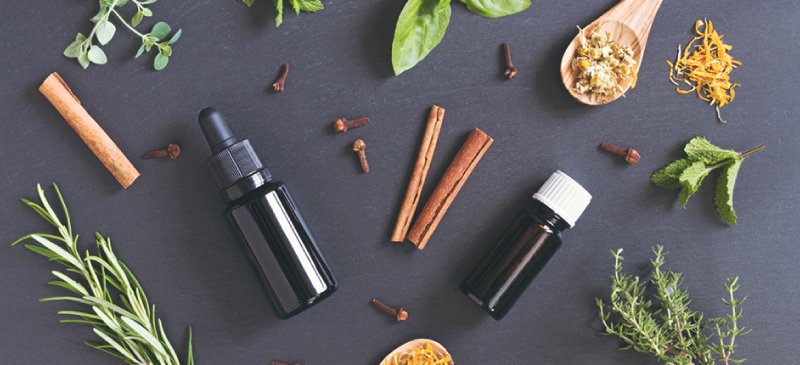
The limbic system, in a nutshell, consists of the neural and chemical pathways that guide our mood, behaviors, and emotions. It is a system that is inherently entwined with memories. To get a clearer grasp on how essential oils can affect your limbic system, consider your olfactory sense (your sense of smell), and how a particular scent can revive intense feelings or emotions that you associate with that smell. For me, there’s a certain metallic quality that reminds me of being a kid at my grandmother’s house, where the water system always smelled and tasted like old pipes. When I was young, I found the smell to be unusual and hated having to brush my teeth with the tap water; as an adult, that particular smell gives me a sense of nostalgia and makes me miss her and all of the family members that used to gather in her home during the holidays. This ability to channel our deepest memories and emotions is why essential oils and aromatherapy can have healing properties that treat underlying imbalances or issues.
Aromatherapy is a healing practice that was used as an element of traditional medicine in ancient Egyptian, Chinese, and Indian civilizations to treat a range of disorders. While there are specific smells that we as individuals connect with our own life experiences, essential oils are made up of chemical compounds — esters and terpenes — that our brains respond to in a measurable way. A report from 2016 listed the effect that a selection of odors had on patients’ brainwave activity in a collection of research pulled from dozens of other studies. The aroma of lavender increased beta waves in an EEG and subsequently increased drowsiness, while the scent of rosemary decreased both alpha and beta waves, leading to an increased sense of alertness; both scents were also associated with depression relief. The scent of Japanese green tea improved tasks that involved memory, while peppermint reduced mental stress. Both the synthetic and real smell of food resulted in a reduced level of attention. (I mean, it shouldn’t be a surprise that the smell of food is distracting.)
The Benefits of Subjective and Placebo Response to Smell
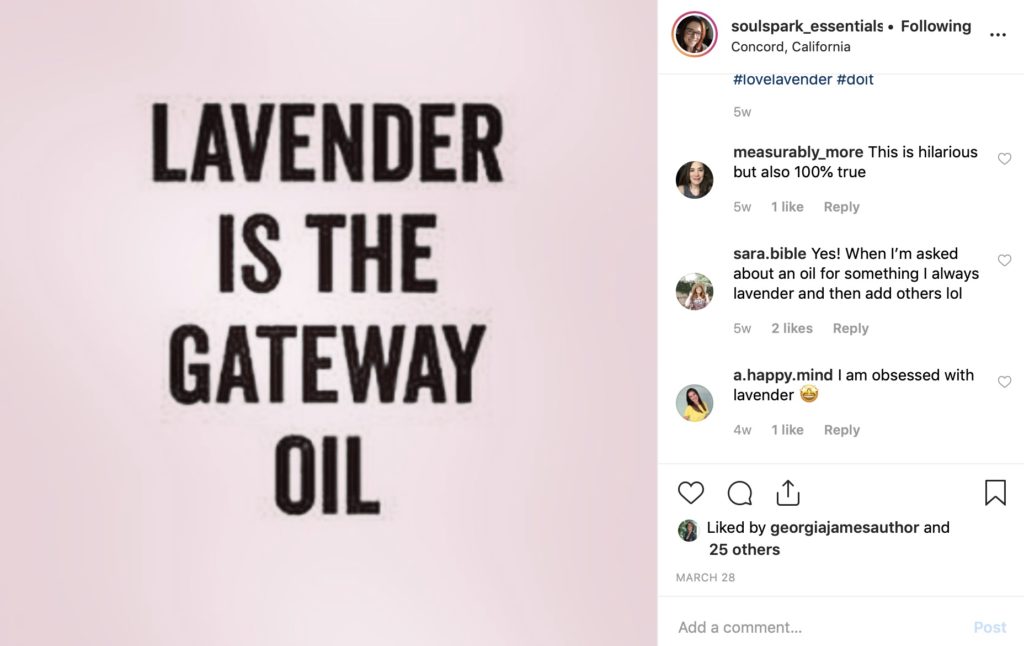
Some responses, though, reflect the highly subjective nature of our olfaction. Infants of depressed versus non-depressed mother had different responses to the smells of lavender and rosemary, suggesting that there may be an intergenerational element of healing trauma through aromatherapy. And then there’s also the placebo effect of essential oils — which should be recognized for what it’s worth. “Good oils just make our limbic system “feel” good, which can’t help but translate into contributing to the improvement of other related systems,” said Roper. “We as humans can believe ourselves into becoming sick; we can also believe ourselves into getting well. Belief is an incredibly powerful thing.”
Whether “actually” curative, measurable in some sense, or simply a placebo response, aromatherapy is increasingly being leveraged in modern, conventional medicine. A study from April found that smokers who weren’t trying to quit cigarettes experienced a significant reduction in cigarettes cravings after they had the chance to sniff their favorite, pleasant odor, amounting to a 23 percent reduction in cigarette c]=raving over the course of five minutes. Michael Sayette, the study’s lead author, told Reuters that the findings of his study warrant further investigation to see if the olfactory sense can be hacked by aromatherapy in a long-term cessation plan, as a way to disrupt cigarette cravings in people who want to kick the habit. “Although five minutes may not seem like a long time,” he noted, referring to five-minute period used in the study, “it may be sufficient to offer smokers a critical window to rethink what they are doing and perhaps leave a situation where the risk of relapse is high.”
Essential Oils as a Topical Cure
Used topically and with proper dilution, EOs can help to treat pain, inflammation, and irritation at the superficial level. DIY solutions abound on the Internet for cosmetic treatments of acne (try antibacterial tea tree oil, diluted with an oil that is non-comedogenic to your skin) or cold sores (try antiviral oil of oregano, diluted with your face oil of choice, when you feel a sore bubbling up). Ginger and black pepper EOs can relieve arthritis and stiffness, while Roman or German chamomile may be beneficial additions to a soothing oil or gel if you suffer from eczema. Creative minds out there have even developed at-home suppository recipes spiked with antifungal and antibacterial EOs for people who suffer from chronic yeast infections.
The claims are endless but the research behind the cures is weak, so Roper suggests taking stock of anecdotal evidence that’s out there — either on the Internet or among your peers— and then, after considering any safety concerns or contraindications, embarking on an informed journey of trial and error. “This (like anything else) isn’t an exact science and sometimes we need to start with one, then move to another.” This process can feel foreign when we’re used to relying upon our doctors to find out what’s wrong with us and then hand us a pill that is designed to cure whatever that condition may be. For one thing, it requires us to actually take stock of what is happening with our bodies, how we’re feeling, if we’re seeing any improvement or experiencing complications. Remember, too that anecdotes are just a guide; you and your friend may both have acne, but just because tea tree oil reduces your breakouts doesn’t mean that it will reduce the diet-related acne of your friend. Using EOs also calls on us to actually do some research, to keep an open mind, and to have a fair share of patience. Not all “cures” happen overnight of course, and with no established timeline for EO use and effects, it can be easy to write off a formulation before we’ve given it time to work. Or not work at all: Roper’s advice to “move to another” is key. As potent as they are, experimenting with EOs isn’t always successful, and sometimes can exacerbate whatever issue it is that we’re trying to treat.
The More You Learn, The More You Don’t Know
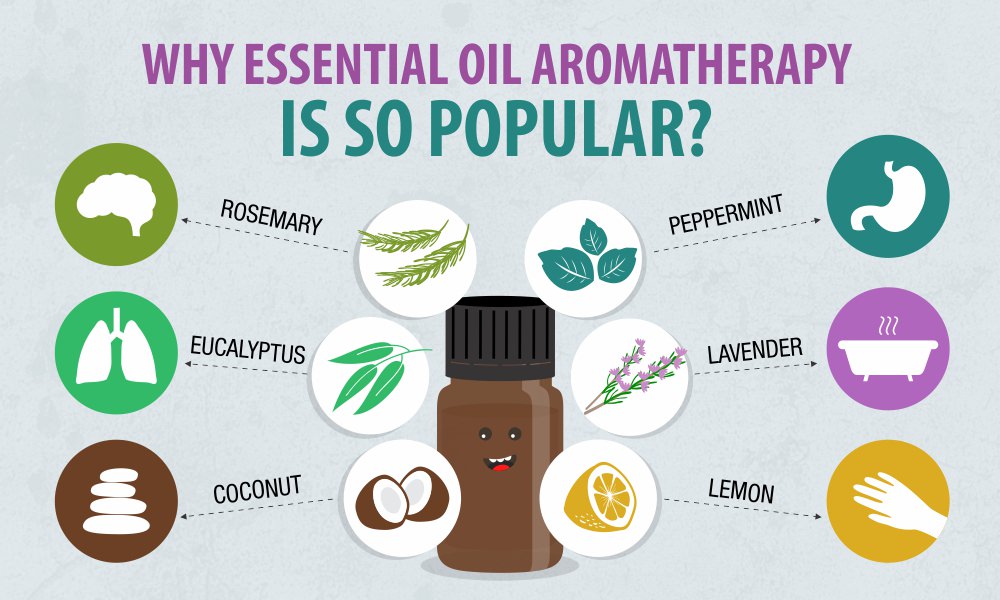
While we may be looking to EOs as an easy cure, saddling them with expectations that they can’t possibly fulfill, we should never forget that our illnesses and conditions may not be as simple as our symptoms suggest. A skin condition like eczema, for instance, may find some relief through topical treatments with an anti-inflammatory EO like calendula, but the flare-ups themselves can be aggravated by emotional stress or unrelated imbalances in our gut. This is where the curative nature of both conventional and alternative medicine becomes muddled. What is being cured? The symptom? The physical root of the condition within the body? Our response to external circumstances that are out of our control?
Another thing to consider, beyond the substantive or placebo effect of EOs, is the fact that using them means we’re not using the products that we find on drugstore shelves, whose components can have both external and systemic effects on our bodies that we haven’t accounted for. For example, using lavender oil to treat breakouts might “work” simply because we’re not using the over-the-counter acne cream that has actually been throwing off our skin’s balance. Roper cited common additives to household and cosmetic products that have been charged with having detrimental effects in our bodies, including phalates, fragrances, and formaldehyde.
“When we introduce or reintroduce healthy plant-based items over manufactured chemically-laden products… I can’t help but believe we’ll be better for it,” said Roper. But even greenwashed products that are labeled “natural” or “organic” can be contributing to our ailments; after all, just because something is plant-based doesn’t necessarily mean that it is safe or beneficial.
“Plant-Based” Does Not Mean Non-Toxic

For good measure, the criticism that “natural doesn’t necessarily mean better” can be applied to EOs too. An EO like tea tree oil can be toxic when ingested, as can cinnamon, clove, and eucalyptus oils. None of those oils, for the record, should ever be consumed. There’s just no reason to do so, and they are toxic AF for your organs. However, some EOs may be used internally for short-term, acute treatment of certain conditions, and these oils will be clearly marked as edible. “Unless an essential oil is SPECIFICALLY noted as a product that can be ingested internally… don’t do it, period,” warns Roper. In fact, unless you can claim knowledge and experience in using EOs, it’s probably better to avoid ingesting them altogether. The Earl E. Bakken Center for Spirituality and Healing at the University of Minnesota cites drug interactions and specific instances of toxicity as reasons to consult an experienced EO resource like Roper instead of taking matters into your own hands.
Another reason to consult an expert when ingesting oils is that not all EOs are created equal; many have additives that are used to adulterate the product or have been contaminated in the manufacturing process. Do you know which products are good or bad? I don’t. I asked Roper how to identify a “trusted” manufacturer of EOs, since there are so many choices out there that span an entire range of price points. “I can tell you that I’ve been using essential oils for about 15 years and when I started I had no idea. I assumed because it was sold as an essential oil, it was safe and plant-based,” she said. She spent a few years becoming familiar with the EO landscape, then began making calls to the EO companies themselves to find out more about their practices and ingredients. “What I found when I started checking labels was a lot of fragrance. Basically the lower the price the higher the amount of crap that got put in the bottle that in no way resembled an actual essential oil!”
Roper has since partnered with Young Living in her practice, an essential oil company that has been following strict standards of ingredient sourcing and audits, especially following a 2017 settlement with the Department of Justice. An internal investigation by Young Living found that one of their suppliers had been illegally importing rosewood oil from endangered sources. The company voluntarily turned the information over to authorities to rectify the situation. The company settled for a nearly half million dollar fine and was ordered to contribute “community service” funds that would go toward the company’s commitment to environmental stewardship. Addressing the incident, Roper said she considered the company’s response and recalibration as an indication of their transparency and ethics. “Young Living has been an industry leader for a very long time and this to me demonstrated the ethics of the company. In my research, I didn’t find a single company with anywhere near the longevity, commitment to their products and customers and corporate ethics,” she explained. There are of course other good companies out there, including Floracopeia or Mountain Rose Herbs. You might even be able to find small producers of certain EOs at your local farmers market.
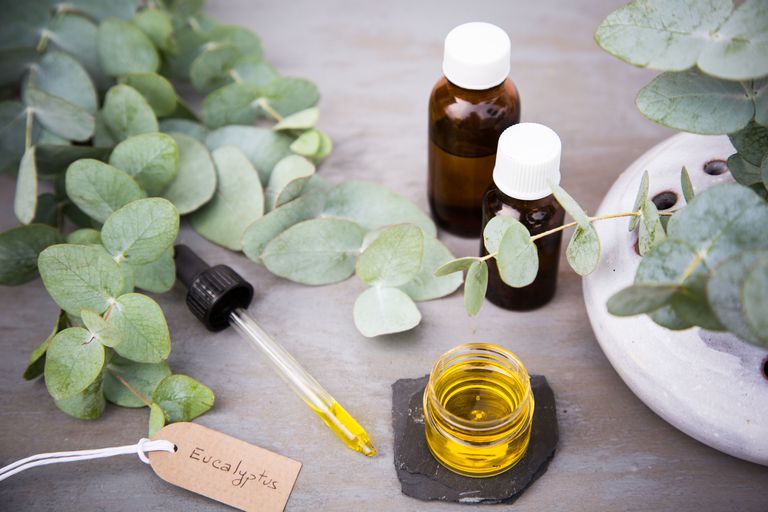
With the disclaimer that Roper is not a doctor that can diagnose, treat, or cure whatever illness ails you, I asked her if she could share some of her go-to EOs that might be beneficial for a wide range of people and conditions. “Lavender is basically the Swiss army knife of essential oils,” she said, citing its oral, aromatherapeutic, and topical uses. “It’s been used for centuries for relieving stress & anxiety, a host of skin conditions, wound healing, sleep, as an antibacterial, for pain relief and the list goes on. Personally I diffuse it at night along with Cedarwood & Eucalyptus for a solid night sleep and clear sinuses.” Roper also shared that she diffuses peppermint oil to relieve symptoms of allergies and even ingests a single drop of Young Living’s food safe Peppermint Vitality oil in her coffee each morning to get an extra boost of energy.
Another one of her favorites is frankincense, an oil prized across the ages; it’s so high-valued that it has even been written into religious texts. “[Frankincense has] been used for everything from an antiseptic and astringent, to a disinfectant, as an immune system booster, for wound healing, aging ‘tonic,’ scar reduction, menstruation regulator, stress reducer, meditation enhancer…” Diffusing it, she said, along with an immune boosting Thieves oil blend helps to get you over a cold. Note that this approach doesn’t cure a cold: it simply helps.
Ultimately, Roper told me to be wary of anyone who says that they can “cure” you with EOs. “Just like we find in Western medicine, the same “prescription” doesn’t always work for every person. Our chemistries are very different based on where we were born, who our parents were, what environmental toxins we may have been exposed to during our life and what our personal toxic load might be.” Instead, she suggested that it’s up to us as unique, informed individuals to take our health back.
For Image credit or remove please email for immediate removal - info@belatina.com



























